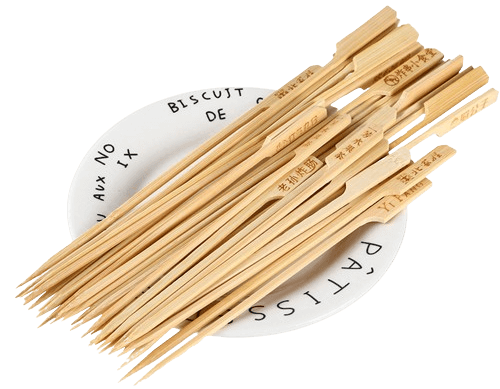Key Takeaways
| Aspect | Details |
|---|---|
| Historical Origin | Originated in ancient China around 1200 BC; first made from bronze, later from bamboo, wood, and other materials. |
| Cultural Significance | Symbolizes the cultural exchange between East and West; adopted in various forms across Asia. |
| Modern Adoption | Specific ways to hold and use chopsticks that vary between cultures; etiquette rules are important in social settings. |
| Etiquette and Techniques | Specific ways to hold and use chopsticks vary between cultures; etiquette rules are important in social settings. |
Introduction
Chopsticks, beyond being mere eating utensils, represent a deep cultural symbolism and historical richness. Originating in China over 3000 years ago, these tools have transcended their basic utility to become icons of Asian dining etiquette and culture. This article explores their evolution from ancient tools to modern dining essentials worldwide, showcasing their role in cultural exchanges and sustainability efforts at Ecostix Global.
Historical Background and Evolution
Chopsticks were first recorded in ancient China during the Shang dynasty. Originally made from bronze, their design was simple yet effective for the era’s prevalent steaming and boiling cooking methods. Over the centuries, the materials evolved to include bamboo, wood, ivory, and even precious metals, reflecting the social and economic status of their users.
Ancient Beginnings
- Origin: The earliest chopsticks were likely simple twigs used to retrieve pots of hot oil or water.
- Material Evolution: From bronze to bamboo, materials changed with availability and technological advancements.
Spread Across Asia
- Influenced by Chinese migrations and trade, chopsticks became common in other parts of Asia, such as Japan, Korea, and Vietnam, each adapting the tool to their unique dining customs.
Cultural Significance Across Countries
Chopsticks are deeply woven into the fabric of Asian cultures, each region adding its nuances to how they are used and perceived.
China
- Symbolism: Represents the philosophical balance between heaven and earth.
- Etiquette: Associated with numerous dining etiquette rules, reflecting one’s upbringing and respect for tradition.
Japan
- Kinds: Japanese chopsticks are typically pointed and shorter, made from lacquered wood.
- Usage: Comes with its set of etiquettes, such as not sticking chopsticks upright in a bowl of rice, as this resembles rituals for the dead.
Korea
- Material: Often made of metal, reflecting historical influences from the royal courts.
- Distinctive Feature: Paired with a spoon, used primarily for eating rice.
Vietnam and Beyond
- Adaptation: Vietnamese chopsticks tend to be longer and often made from lighter wood or bamboo.
- Cultural Exchange: As these countries interact with China, chopsticks serve as a conduit for cultural and culinary exchange.
Modern Adoption and Variations
Chopsticks have not only spread throughout Asia but have also made their way into the global dining scene, thanks in part to the growing popularity of Asian cuisines around the world.
Global Adoption
- Cultural Appreciation: As Asian cuisines gain popularity, so do the intricacies of dining etiquette associated with them, including the use of chopsticks.
- Educational Outreach: Restaurants and cultural centers often provide brief tutorials on chopstick use, emphasizing the cultural respect and skill involved.
Chopsticks Today
- Material Innovations: With sustainability a growing concern, materials such as recycled plastics and biodegradable options are being explored.
- Design Variations: Modern chopsticks come in various designs, including non-slip grips and customizable styles that cater to personal preferences or dietary needs.
Etiquette and Techniques
Proper chopstick use is steeped in cultural traditions that vary significantly across regions. Understanding and respecting these norms is crucial in global dining etiquette.
Basic Techniques
- Holding Chopsticks: Typically, the lower chopstick is held stationary, and the upper one is moved to grasp food.
- Proper Usage: Avoid pointing with chopsticks or using them to impale food, as these actions may be considered rude in many cultures.
Cultural Taboos
- In China: Do not stick chopsticks vertically in a bowl of rice, as this is reminiscent of incense sticks burned at funerals.
- In Japan: Do not pass food directly from your chopsticks to someone else’s, reminiscent of funeral rites involving bones.
- In Korea: It is considered impolite to pick up your bowl off the table while eating with chopsticks.
Chopsticks in Art and Heritage
Chopsticks are not only tools but also art forms and pieces of heritage that reflect the craftsmanship and cultural pride of their origins.
Artistic Expression
- Craftsmanship: In many cultures, chopsticks are crafted with elaborate designs and made from luxury materials for use in special occasions or as gifts.
- Collections: Many enthusiasts collect artistic chopsticks, which are often displayed in cultural exhibitions and museums.
Cultural Recognition
- Heritage Status: In some regions, chopstick-making has been recognized as an intangible cultural heritage, preserving the techniques and traditions for future generations.
- Educational Programs: Workshops and programs that teach the art of making and using chopsticks help maintain cultural heritage and pass skills on to younger generations.
Conclusion
The journey of chopsticks from simple cooking tools to symbols of cultural identity and etiquette illustrates their profound impact on dining cultures worldwide. At Ecostix Global, we embrace these traditions while innovating towards sustainability. Our bamboo products are not just eco-friendly; they are a bridge connecting ancient customs with modern environmental consciousness.
Chopsticks are more than just utensils; they are an invitation to explore and appreciate a rich tapestry of global cultures. We invite you to discover more about our sustainable practices and the cultural significance of chopsticks on our blog.



